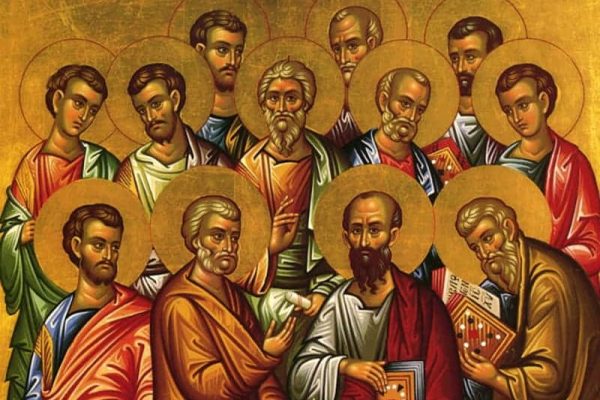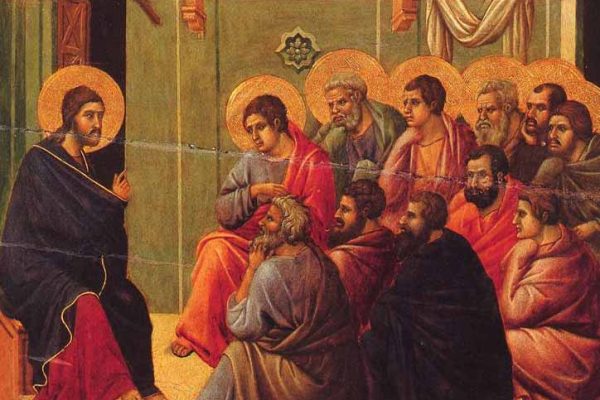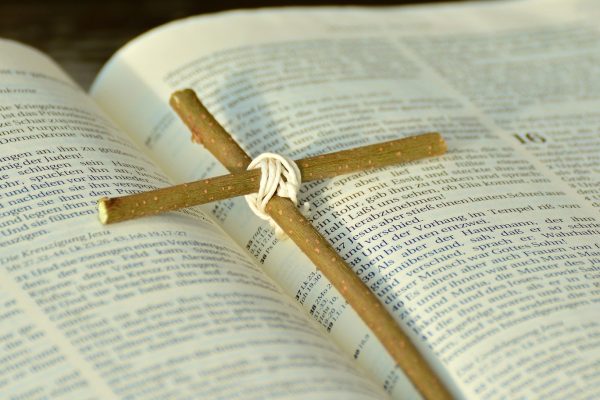Home>Christian Resources>A Special Report: What Is Betty Eadie Hiding?


Christian Resources
A Special Report: What Is Betty Eadie Hiding?
Published: November 5, 2019
Find what Betty Eadie is hiding as we go in-depth into her book Embraced by the Light. See miracles of God through her near-death experience & in her life
(Many of the links in this article redirect to a specific reviewed product. Your purchase of these products through affiliate links helps to generate commission for Christian.net, at no extra cost. Learn more)
Christian Research Institute Journal
Read more: Top Famous Christians Who Have Converted
News Watch
by Richard Abanes, Paul Carden and Joe Maxwell
A column from the Christian Research Journal, Winter 1994, page 7. The Editor-in-Chief of the Christian Research Journal is Elliot Miller.
A Special Report: What Is Betty Eadie Hiding?
When Embraced by the Light first appeared in bookstores, it didn’t look very different from the hundreds of other near-death experience (NDE) stories that have surfaced since Raymond Moody’s 1975 book Life After Life put the term “near-death experience” into the dictionary. Most of these post-1975 NDE-related books, after piquing the interest of only a few metaphysical loyalists, have faded into literary obscurity within a few months of being published. And while Embraced by the Light may have seemed destined for a similarly gloomy death, nothing could have been further from the truth.
Though at first, author Betty J. Eadie shared her story only with family and friends, they coaxed her into presenting it before discussion groups of the International Association for Near-Death Studies. Eventually, she began giving talks to local special-interest groups. One audience member took notes, which soon found their way into the hands of Curtis Taylor, a Utah-based book editor who was so enthralled by the story that he started Gold Leaf Press specifically to publish Embraced by the Light.
The book’s first printing of 20,000 copies sold out within two weeks. It’s second printing of 30,000 copies was snatched up just as fast. Successive printings drew a similar response and soon, waiting lists to get a copy of the supernatural saga became an ever-present dilemma for the spiritually hungry — Betty Eadie mania had struck.
Six months after its December 1992 release, Embraced by the Light hit the New York Times bestseller list. In May of 1993 Bantam paid $1.5 million for paperback rights to the story (a record for a first-time author), and audio rights were sold at auction that same month for $100,000. As of February 7, the trade journal Publishers Weekly ranked it the no. 1 hardcover nonfiction bestseller after 37 weeks on the list — displacing such heavyweights as Rush Limbaugh and Howard Stern. At press time, the 147-page “journey beyond death” adventure had sold over one million copies, and sales continued strong.
What is the attraction? Eadie, 51, says that “people are finding a lot of hope, and they are learning to use what I’ve written from the experience to modify their lives….it has helped them overcome a lot of grief that they’ve suffered from the loss of their loved ones.”
Kimberly Clark-Sharp, president of the International Association of Near-Death Studies, states that “even after interviewing over 1,000 near-death experiencers, Betty Eadie’s account remains the most detailed and spellbinding near-death experience I have heard.” Raymond Moody describes her account as “the most profound and complete near-death experience ever.”
Eadie’s narrative opens on November 19, 1973, at Riverton Hospital (now Highline Specialty Center) in metro Seattle, where, after undergoing a routine hysterectomy, she allegedly started hemorrhaging, subsequently died, and didn’t come back to life until almost five hours later. What she saw and learned while on “the other side” answered almost all of her questions about life and death.
“I had this wonderful experience that I believe was given to me from God,” she says, “and I felt like I had to share it.”
Eadie explains that her main message is one of love and that “the book was never meant to proselytize….never meant to be for a particular church.”
A Closet Mormon? Eadie openly declares in her book and in public interviews that Jesus Christ is her personal Lord and Savior — prompting some in the media to call her a “devout Christian.” Evangelicals, too, have now joined cash register lines to buy Embraced by the Light. The December 1993 issue of Bookstore Journal noted that the Berean Bookstore in Phoenix received “more than 80 requests for it.” However, the Jesus Christ in whom Eadie believes is very different from the one in whom orthodox Christians believe.
Betty Eadie is a member in good standing of the Church of Jesus Christ of Latter-day Saints (LDS) — in other words, a Mormon. Few of the millions who have seen and heard Eadie know of her religious affiliation because apparently she, her publishing company, and her publicist are now trying to keep that information quiet.
Except, of course, in Utah. A Salt Lake Tribune book review of December 20, 1992, observed that public-relations material circulated in Utah prior to Eadie’s 1992 publicity tour of that state advertised her as “a recent convert to the LDS church.” An Ogden Standard-Examiner article of March 6, 1993, quotes Eadie as saying that during her NDE she was told the LDS church was “the truest Church on the earth.”
Yet, when asked by the JOURNAL which church was the truest, she replied: “If I were to tell [people]…the church that I find most rewarding, most fulfilling for me, they might not find that at all….I might be misguiding them from what they need to find for themselves….I have learned that many of the things that I have written about in the book matches with many of these other religions. And I think that there are common threads that run through all churches.”
Evading the fact of her LDS church affiliation, she also commented: “I think it’s…pretty much of an assumption….I won’t divulge my religious beliefs…[or] the churches that I attend now at all. And the reason for that is, some people have contacted me and said that they would join any church that I belong to. And that is not why I wrote the book.” (This despite the fact that, in published interviews, Eadie has referred to her many appearances at Mormon “fireside” gatherings. She told the Salt Lake Tribune that public speaking gives her “a chance almost daily to bear my testimony of Jesus Christ. It’s like being at a [Mormon] testimony meeting every day.”)
Eadie repeatedly refused to admit she was a Mormon during the above conversation — even when confronted with a statement the JOURNAL obtained from Don LeFevre, Manager of Print Media Response for the LDS church, that Eadie is an active Mormon. Eadie feigned surprise, asking: “Who is this gentleman?….How does he know? Why does he think that?”
Two days later, however, the JOURNAL spoke with Tom Britton, Eadie’s Executive Assistant. His story was somewhat different: “Betty doesn’t only attend the LDS church. Her membership is in that church, but that’s not the only church she attends.” Hours later Eadie’s Mormon bishop, Dan Miller, verified that she and her family have attended the Seattle, Washington 9th Ward for at least 15 years.
Mysterious Motives. Why would Eadie — who belongs to a movement that prides itself on the phrase “every member a missionary” — first make her LDS membership known to prospective buyers, then all but deny it?
One might suspect a commercial motive (her LDS identity, though a marketing plus in the predominantly Mormon “Intermountain West” region where the book was first released, could be a liability to a broader, unsuspecting public). Another possible reason is ecclesiastical disapproval of her story. According to an article in the October 23, 1993 Salt Lake Tribune, “in a meeting with male LDS stake leaders in Sandy [Utah] last spring, Apostle Boyd K. Packer called the book ‘bunk,’ a witness said.”
But at least one observer sees Embraced by the Light as a kind of Trojan horse — a conscious attempt at indirect proselytism. Dick Baer, founder and director of Ex-Mormons and Christian Alliance of Orangevale, California, characterizes it as “a very, very, sophisticated pre-evangelism tool to get people to join the Mormon Church, because all the concepts of Mormon doctrine are laid out in the book.” Baer also feels it is “a carefully crafted book to denigrate the teachings of Christianity, especially on the subject of deity.”
It’s no surprise that in 1992 Embraced by the Light was a no. 1 selling book in Salt Lake City and is used by Mormon study groups, since the book affirms important LDS doctrines:
Pre-mortal existence: “I began to see images…of an existence before my life on earth….The fact of a pre-earth life crystallized in my mind….Things were coming back…that had been purposely blocked from me by a ‘veil’ of forgetfulness at my birth” (pp. 31, 44).
Necessity of the fall of man: Eadie says that while in “heaven” she learned that Adam and Eve didn’t really “fall.” Instead, Eve “made a conscious decision to bring about conditions necessary for her progression, and her initiative was used to finally get Adam to partake of the fruit” (p. 109).
Plurality of gods: The Mormon doctrine that God the Father and Jesus Christ are entirely separate beings (gods) is advanced by Eadie (p. 47), who elsewhere hints at Mormonism’s doctrine of eternal progression to godhood (pp. 45, 61, 109, 146) and subtly implies the Mormon view that God is our literal father (p. 52). In LDS teaching, our Heavenly Father begot us first through celestial sex with one or more heavenly mothers.
Salvation after death: Embraced by the Light also endorses the Mormon claim that salvation is obtainable after death (p. 85). Eadie expands on this doctrine, however, to include the belief that everyone will eventually be saved (universalism). Her only qualifier is that it will definitely be through Jesus that we “all” return to God.
In the “beyond” Eadie was taught that all religions are necessary for the spiritual progression of humanity (p. 45). She explained to the JOURNAL: “I think that we are all believing in the same God. I think that we just have had different instructors or different leaders, you might say.”
This last view is more suggestive of New Age concepts than of Mormonism. Significantly, Embraced by the Light promotes several teachings similar to those found in the New Age movement (pp. 57- 59) as well as ideas prevalent in the Mind Sciences (pp. 62-65). This is not surprising, since Eadie, a former hypnotherapist, claims to have a “Heinz 57” religious background and a history of paranormal experiences extending into her childhood.
Customized Comfort. Some of Eadie’s life-and-death answers seem tailor-made for giving special comfort to those with special fears. For instance, Eadie discovered: “If our deaths are traumatic, the spirit quickly leaves the body, sometimes even before death occurs. If a person is in an accident or fire, for example, their spirit may be taken from their body before they experience much pain. The body may actually appear still alive for some moments, but the spirit will have already left and be in a state of peace” (p. 83).
She further states: “At the time of death, we are given the choice to remain on earth until our bodies are buried or to move on….Most spirits choose to remain on earth for a short time and comfort their loved ones….Sometimes the spirits will remain longer if the loved ones are in despair” (pp. 83-84).
There is even hope for atheists: “Some who die as atheists….stay on the earth until they learn to accept the greater power….eventually they learn to move on to accept the greater warmth and security of God” (pp. 84-85).
Perhaps the most “politically correct” section of Embraced by the Light intimates that abortion is acceptable, although “contrary to that which is natural” (p. 95). To Eadie, pre-birth babies are merely bodies waiting for a spirit’s arrival from heaven (spirits living their pre-earth life can choose exactly when to enter a body). In describing abortion, she writes: “The spirit coming into the body feels a sense of rejection….It knows the body was to be his….But the spirit also feels compassion for its mother, knowing that she made a decision based on the knowledge she had” (p. 95).
When Eadie could not be reached for a comment on abortion, the JOURNAL contacted Tom Britton, Eadie’s Executive Assistant, who stated that Eadie believes abortion is “not sin at all.” When asked if Eadie was pro-choice, he said he preferred describing her as “pro-free agency.” Britton further explained Eadie’s position on aborted “bodies” that do not yet have a spirit: “Whether it is painful or not for the spirit, it’s not the natural thing to do.”
In all likelihood, Embraced by the Light has won broad acceptance because it contains the type of material that offends few, but pleases many. The danger, says Dick Baer, is that “when the Mormon missionaries come along,…anyone who has read this book — ‘click!’ — they fall right into it.”
Missing Evidence. What is missing from Eadie’s fantastic story is not only doctrine consistent with her claim to be Christian, but also concrete evidence to support the claim that she died. None of Eadie’s medical records has ever been made public. When asked by the JOURNAL if she will someday make such records available for inspection, she replied, “No, I doubt it.”
According to Britton, “Hospital records and doctors’ names are very personal to Betty. She also feels that people who need proof of her story, even if they get the proof, won’t accept it.”
The paperback edition of Embraced by the Light is due out in October. Eadie is already working on a sequel, which she hopes to release by year’s end. She plans to follow that volume with an autobiography and perhaps more books about supernatural experiences she’s had. Some of the experiences, says Eadie, have been recent spirit visitations from individuals she met while “dead.”
Betty Eadie mania may not be over for quite some time.
Richard Abanes and Paul Carden
Questions Persist about Opus Dei
Tammy DiNicola came from a good Catholic stock in the town of Pittsfield, Massachusetts. While a student at Boston College, she became involved in a Catholic lay movement.
“As time went on, Tammy said she was going on retreats and all, which I thought was great,” recalls her mother, Dianne DiNicola. But things changed. “We started noticing a difference in her. Where she was once very connected with her family, she seemed very aloof and preoccupied. Now, this didn’t happen right away. It was a very slow process.”
Tammy was becoming involved with Opus Dei, a controversial conservative Roman Catholic organization that, by charter, calls for laypeople to live disciplined, holy lives — an organization that Tammy now opposes. The group, founded in 1928 in Madrid, has thrived in the late twentieth century, growing from 3,000 members in 1950 to about 1,300 priests and 76,000 members worldwide today (3,000 of whom are in the U.S., most of them affiliated with houses located around major college campuses). Among Opus Dei’s activities is the operation of dozens of schools, clinics, and community centers around the world.
The movement’s founder, Monsignor Josemaria Escriva de Belaguer, claimed that at age 26 in Spain he received a message from God calling him to help bridge the gap between Catholics’ faith and their daily living. In 1928 he founded his movement, formally known as “The Priestly Society of the Holy Cross and Opus Dei.” He died suddenly in Rome in 1975.
Despite its wide influence and relative affluence, Opus Dei (Latin for “work of God”) has escaped neither scrutiny nor opposition. For example, in the mid-1980s the Italian newsmagazine L’Espresso ran stories alleging that Opus Dei was secretly plotting to infiltrate the Catholic church’s hierarchy and promote a conservative political agenda worldwide. (The latter claim, at least, now seems largely discredited.) In the U.S., Church and State magazine labeled Opus Dei “The Pope’s Holy Mafia,” and the group’s harsher critics have likened it to Freemasonry and the Moonies.
Fr. Kent Burtner, a Dominican priest and top Catholic specialist on cults and aberrant movements, allows that Opus Dei has “potential to do a great deal of good.” Still, he told a gathering at the 1992 Cult Awareness Network (CAN) National Conference that although Opus Dei “maintains formal and nominal lines of accountability in the Church… in some very critical ways [it] behaves very much like a garden-variety cult.” Burtner told the JOURNAL, “My primary concern is that the mode of spiritual growth that Opus Dei seeks to engender is a sense of coming into conformity with the Word of God through externals rather than through internal transformation. This is basically one of the problems of any group like a shepherding group.”
In recent years, groups have been founded to aid parents and children who have been adversely affected by the movement. Among them are Our Lady and St. Joseph in Search of the Lost Child, an international effort founded by one of Opus Dei’s staunchest critics, Joseph Garvey, who has two daughters in the movement; and Opus Dei Awareness Network, Inc. (ODAN), founded by Dianne DiNicola and others.
But Opus Dei members reply: How could our movement be so off-base if it enjoys such favor from God’s earthly voice, the pope?
Support from the Top. Without a doubt, the group has the strong blessing of John Paul II himself, who has made it the church”s first-ever “personal prelature” — meaning that Escriva’s successor, Monsignor Alvaro del Portillo, answers directly to the pontiff. On the day John Paul II was elected to lead the world’s Roman Catholics, he prayed at Escriva’s casket. And the pope spends every Easter with a group of Opus Dei members.
An earlier pope, John XXIII, said that Opus Dei could open “unsuspected horizons of apostolic zeal in the modern world.” Indeed, Escriva called for members to engage in “holy coercion” to bring others into the movement. He once declared that “only one thing is necessary: that Opus Dei be accomplished on Earth.”
Many of Escriva’s followers must have considered that goal closer than ever when, on May 17, 1992, some 300,000 gathered in and around St. Peter’s Square to hear the Pope pronounce Escriva “Blessed,” which is the second (and most important) step of three on the path to canonization, or sainthood. In the view of Newsweek religion editor Kenneth Woodward and other knowledgeable observers, Escriva’s beatification process was suspiciously riddled with irregularities, and many viewed his “promotion” with alarm. Nevertheless, he is now more than two-thirds of the way to sainthood, even though church authorities have considered his “cause” for only 17 years — a modern record.
While prominent Catholic leaders support his canonization, one of Escriva’s personal secretaries confirms reports that her former boss had, among other shortcomings, “a filthy temper” and does not deserve to be sainted. Maria del Carmen Tapia, who now lives in the United States, told the JOURNAL in 1993 that “he was able to be very kind and warm to us, but he was also able to launch into a tantrum against anybody for the smallest thing that he might have considered wrong or against Opus Dei ‘good spirit'” — that is, its internal harmony and teachings. She added: “In the road to sainthood, the Roman Catholic Church still needs to accept a reliable miracle in order to declare Escriva a saint. Given the tremendous criticism that the Vatican was under because of last year”s declaration of Escriva as a ‘Beato,’ I am sure that the Church will be slow in such a serious point.”
Opus Dei “numeraries” (members who commit to lives of celibacy, poverty, and obedience, and who usually live at an Opus Dei house) and “supernumeraries” (married members who otherwise live the Opus Dei disciplines and attend regular meetings) go to work each day and strive to work to the glory of God. Members of a third group — associates — formally commit to celibacy, but live with their families or friends. A final group — cooperators — requires a low level of commitment, and includes non-Catholics.
Opus Dei members commit to rigid disciplines of prayer and study. Perhaps more controversially, they also submit themselves to a spiritual “director.” Ex-adherents claim that members are encouraged to pursue the mortification of their flesh by such disciplines as wearing a cilice (a kind of spiked chain), sleeping on the floor, and flagellating themselves (Escriva reportedly beat himself bloody on a regular basis) — practices that, writes Catholic historian Michael Walsh, “seem to have disappeared from the penitential routines of the active orders such as the Jesuits or Passionists.”
In his CAN remarks, Burtner expressed concern about Opus Dei’s “sidestepping of the authority of accountability in the Catholic Church. Normally a group that’s active in any religious community that’s active in the church is accountable to the local bishop. But the Catholic Church has made a special case for Opus Dei, basically by giving it a status called ‘personal prelature,’ which means Opus Dei is a group that has its own bishop — so it is entirely possible for a person to become a Roman Catholic by being recruited into Opus Dei and remain in that group without ever having been to a regular Roman Catholic parish anywhere in the world.”
Escriva’s message caught on first among Spanish intellectuals, and has been embraced by top professionals and intellectuals, especially in Latin nations. But Opus Dei U.S. spokesman William Schmitt told the JOURNAL that the movement’s members span all social classes, from slum areas to New York City’s top publishing companies.
A Closer Look. People like Joseph Garvey say that Tammy DiNicola’s story illustrates the cause for concern about Opus Dei’s practices. In 1989 he published a 59-page booklet, Parents’ Guide to Opus Dei, in which he uses the Vatican’s own criteria (as outlined in a 1986 pastoral letter) for analyzing sects and cults. Among the criteria:
– “A subtle process of introduction.” The Opus Dei constitution, according to Garvey, says that “numeraries and supernumeraries must be convinced of the need to maintain prudent silence regarding the names of other members and never reveal to anyone the fact that they belong to Opus Dei.” In response, spokesman Schmitt asserts that no one in Opus Dei is covert about their membership, and in fact are very vocal in their testimony and witnessing.
– “The requirement of unconditional surrender to the initiator, leader.” Escriva instructed that members should hold “blind obedience to your superior [as] the way of sanctity.” Critics also note that members are urged to refer to Escriva as “The Father” in terms deliberately similar to language used of God. Schmitt protests that this is completely misunderstood. “It is amazing that something like that could be so twisted. He is referred to as our Father because he is our founder. The Catholic Church has always talked about this…Mother Teresa is called ‘Mother’ in her order.”
– “Processing recruits away from their past lives.” According to one former recruit, Opus teaches clearly that “When God enters the picture, parents’ rights cease.” Schmitt asserts that Opus Dei doesn’t encourage breaking family ties. “We encourage just the opposite. And, in fact, that is what happens when one joins Opus Dei. One comes to love, and cherish, and respect one’s parents more.”
– “The use of ‘isolation: control of rational thinking processes, elimination of outside information and influence…‘” Each member is accountable to a non-ordained “spiritual director” who, in the context of a weekly interview known as the “fraternal chat,” becomes a confessor of sorts, requiring an absolute disclosure of all the member’s thoughts, feelings, and desires — at a level far beyond what is normally offered in confession before a priest. This practice, which runs counter to normative Roman Catholicism, is one that especially concerns Burtner, who says that it affords one person intimate knowledge and control over a member. Members also submit to close supervision of their money. Counters Schmitt: “Opus Dei does not violate one’s freedom in the slightest way, nor does Opus Dei impose a certain mindset in the slightest way.”
-
- —
Joe Maxwell
End of document, CRJ0171A.TXT (original CRI file name),
“News Watch”
release A, August 31, 1994
R. Poll, CRI
A special note of thanks to Bob and Pat Hunter for their help in the preparation of this ASCII file for BBS circulation.)
Copyright 1994 by the Christian Research Institute.
COPYRIGHT/REPRODUCTION LIMITATIONS:
This data file is the sole property of the Christian Research Institute. It may not be altered or edited in any way. It may be reproduced only in its entirety for circulation as “freeware,” without charge. All reproductions of this data file must contain the copyright notice (i.e., “Copyright 1994 by the Christian Research Institute”). This data file may not be used without the permission of the Christian Research Institute for resale or the enhancement of any other product sold. This includes all of its content with the exception of a few brief quotations not to exceed more than 500 words.
If you desire to reproduce less than 500 words of this data file for resale or the enhancement of any other product for resale, please give the following source credit: Copyright 1994 by the Christian Research Institute, P.O. Box 7000, Rancho Santa Margarita, CA 92688-7000.
Rancho Santa Margarita
California 92688-7000










